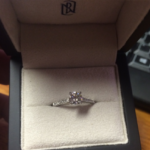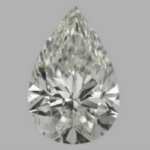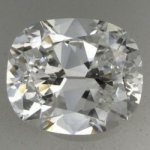All About Lab Created Diamonds
It can sometimes be confusing when someone starts talking about lab created diamonds vs. simulated diamonds vs. synthetic diamonds vs. man-made. The truth is that these terms all refer to cultured diamonds that are produced in a technological process (as opposed to a natural geological process). Diamonds were first discovered to be pure carbon in 1797 and since that time many attempts have been made to recreate what nature has produced. It wasn’t until the 1970’s that gem-quality synthetic diamond crystals were successfully produced by General Electric for use with jewelery.
Simulated diamonds are not carbon-based crystals. They do not have the chemical or physical properties that natural diamonds have and are therefore priced much lower than lab created diamonds. Examples of diamond simulants include: cubic zirconia (CZ) and moissanite and even naturally formed white zircon and quartz have been used to pose as diamonds. These imitation or faux diamonds try to mimic a natural diamonds color, transparency, luster, refraction/dispersion of light, hardness, toughness and polish.
Cubic Zirconia are the most popular in simulated diamonds. There are different qualities of cubic zirconia which does affect the overall light reflection and brilliance.
Lab created diamonds are 100% PURE carbon diamonds. There is no difference in physical, optical, chemical and atomic properties of lab created diamonds as compared to naturally formed mined diamonds. The only way to tell the difference between a natural diamond and a synthetic diamond is through an advanced infrared Raman spectography tool which can show distinct ultra-violet and infrared absorption differences. This is the only reliable method to distinguish a synthetic diamond from a naturally formed diamond.
If you are looking for a 100% pure carbon diamond without feeling guilty about the affects of mining on the surrounding eco-system or native people, then opting for a lab-created diamond is a popular choice.
How Are Pure Carbon Lab Created Diamonds Produced?
1. High Pressure High Temperature
HPHT is a technique in which the natural growing environment that is found within the earth is replicated in a lab setting. The most common HPHT process to produce gem quality diamonds is the Bar press. This technique was developed by Russian scientists and utilizes inner and outer anvils to apply hydraulic pressure within the press. Diamond powder or graphite, a catalyst mixture containing metals and powders (iron/nickel) and one/several small diamond crystal “seeds” are mixed together in a high pressure/high temperature (50,000 atmospheres/1500 C) environment within the press. After many days in an extremely controlled environment, these elements combine, melt and reform during a cooling period to create a finished rough diamond that is ready to be cut and polished.
- Synthetic White Diamonds are difficult to produce and take a very long time to grow in lab-created settings. The largest of synthetic white diamonds are nearly 1.0 carat, with most falling within the 0.40-0.60 carat weight.
- Synthetic Yellow and Yellow-Orange Fancy Colored Diamonds are easier to grow and are therefore more plentiful. These diamonds take 5-6 days to form within the growth cell and can be as large as 2.0 carats. The yellow color comes from nitrogen (as per a naturally formed diamond).
- Synthetic Light Blue and Fancy Vivid Blue Diamonds are also easier to grow. These take on average 7-10 days to form and can be as large as 1.0 carat. The blue color comes from boron (as per a naturally formed diamond).
- Synthetic Fancy Light Pink to Fancy Deep Pink Diamonds start off as yellow diamonds. These diamonds then go through a post growth process called irradiation and annealing to form their “pink” color. Because these diamonds start off as yellow diamonds, you can find them in more shapes and sizes up to 2.0 carat. Irradiation is permanent, irreversible, and does not alter any other property in the diamond except it’s color.
2. Chemical Vapor Deposition
CVD is another popular synthetic diamond technique that is used primarily for producing industrial diamonds in addition to gem-quality diamonds. Again, carbon based gases are heated/vaporized within a vacuum chamber to allow the carbon atoms within the gas mixture to separate. Carbon atoms then deposit on the seed crystal and continue to grow into a rough diamond crystal.
Man-Made Diamond Pricing vs. Natural Diamond Pricing
Because lab-created diamonds are nearly impossible to distinguish from natural diamonds, they are more expensive than simulated diamonds. The color, cut, carat size and clarity of a man-made diamond all help to determine it’s price. As white lab-created diamonds are incredibly difficult to grow and are few in number, these diamonds tend to cost the same as white mined natural diamonds. Blue lab-created diamonds take more time than other colors to develop and are about 10% of the cost of a blue mined natural diamond. Finally, yellow and orange fancy lab-created diamonds are about 25% the cost of their natural mined diamond equivalent.
The Advantages to Lab-Created / Man-Made Diamonds
Since man-made diamonds are 100% pure carbon-based diamonds, the only difference is its source. However, there are many distinct advantages to purchasing a lab-created synthetic diamond including:
1) A minimum of 10% and maximum of 50% cheaper than naturally formed diamonds
2) Lab-created diamonds are 100% conflict free and completely ethical. Due to the recent Zimbabwe massacres in 2008, “conflict-free” claims of most natural diamonds cannot be completely confirmed.
3) Synthetic diamonds often have better clarity grading than naturally formed diamonds.
4) Synthetic diamonds are eco-friendly and require no mining and little energy to produce. These diamonds are not the cause of drained lakes, explosives, damage to fragile ecosystems in Canada, Russia, and of course Africa.
5) Synthetic diamonds are now certified by the world’s leading gem labs. For example, GIA’s synthetic colored diamond grading report identifies a diamond as laboratory-grown and laser inscribes it with “laboratory grown” for additional identification.
So, will the world ever choose a synthetic lab-created diamond over a naturally formed diamond? There is a very strong reason to believe so. More and more people are becoming ethical consumers and are very conscious of where and how diamonds are sourced. To many, it just isn’t worth it to pay a premium for a diamond that “could” be the reason for war funding and bloodshed, not to mention destroying the earth and ecosystems. GIA, EGL and IGI all provide a synthetic colored diamond report to aid in diamond verification and confirmation. And, with technology always improving, there is no doubt that bigger and more beautiful synthetic diamonds with gorgeous fancy colors will flood the market in the years to come.
Hey.You Want Ideal Cut Diamonds?
You've got it.
Join ODBA's Diamond Deal Friday and get handpicked diamonds every week from me to you.
No consultation required. Subscribe now!
ODBA Recommends
You May Also Like








